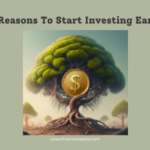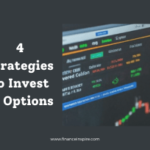5 difference between active and passive investing – Understand the key distinctions between these two investment strategies. Active investing involves hands-on picking of stocks/funds, while passive investing tracks a market index. Compare costs, potential returns, risks and which approach aligns with your goals.
5 difference between active and passive investing – Active Investing
Active investing involves actively managing your investment portfolio by attempting to outperform the overall market or a specific benchmark. This approach is based on the belief that through extensive research, analysis, and market timing, skilled investors can identify undervalued or overvalued securities and make strategic decisions to generate superior returns.
Here are some key characteristics of active investing:
1. Portfolio Management: Active investors continuously research and analyze individual securities, sectors, and market conditions to make buy, sell, or hold decisions. This process involves actively managing the portfolio, buying and selling securities in an attempt to capitalize on market opportunities and mitigate risks.
2. Stock Picking: Active investors rely heavily on identifying individual stocks or other securities that they believe will outperform the broader market. This stock-picking process often involves fundamental analysis, which examines a company’s financial statements, management team, competitive position, and growth prospects.
3. Market Timing: Active investors may also engage in market timing, which involves trying to predict when to enter or exit the market based on economic conditions, market trends, or other factors.
4. Higher Fees: Active investing typically involves higher fees and expenses compared to passive investing. This is because active portfolio management requires a team of research analysts, portfolio managers, and traders, whose services come at a cost.
5. Potential for Higher Returns: The primary goal of active investing is to generate returns that outperform a specific benchmark or the overall market. However, this potential for higher returns comes with increased risk and the possibility of underperforming the market.
5 difference between active and passive investing – Passive Investing
Passive investing, on the other hand, involves building a portfolio that aims to match the performance of a specific market index or benchmark, rather than attempting to outperform it. This approach is based on the belief that it is difficult to consistently beat the market after accounting for fees and transaction costs.
Here are some key characteristics of passive investing:
1. Index Tracking: Passive investors typically invest in index funds or exchange-traded funds (ETFs) that are designed to replicate the performance of a specific market index, such as the S&P 500 or the NASDAQ Composite. These funds hold a basket of securities that mirrors the composition of the index they track.
2. Buy and Hold Strategy: Passive investors generally follow a buy-and-hold strategy, holding their investments for the long term and making minimal changes to their portfolio. This approach minimizes transaction costs and reduces the potential for mistiming the market.
3. Broad Diversification: By investing in index funds or ETFs that track broad market indices, passive investors achieve instant diversification across a wide range of securities, sectors, and asset classes.
4. Lower Fees: Passive investing typically involves lower fees and expenses compared to active investing. Index funds and ETFs generally have lower management fees since they require less active management and research.
5. Market Returns: The primary goal of passive investing is to capture the overall returns of the market or the specific index being tracked. While this approach may not generate outsized returns, it also minimizes the risk of significant underperformance relative to the benchmark.
5 difference between active and passive investing – Key Differences
The main differences between active and passive investing can be summarized as follows:
1. Investment Approach: Active investing involves actively managing a portfolio and attempting to outperform the market, while passive investing involves tracking a market index or benchmark.
2. Portfolio Management: Active investors continuously research and make buy, sell, and hold decisions, while passive investors follow a buy-and-hold strategy with minimal portfolio changes.
3. Fees and Expenses: Active investing typically involves higher fees and expenses due to the costs associated with active portfolio management and research, while passive investing generally has lower fees and expenses.
4. Potential Returns: Active investing aims for higher returns by attempting to outperform the market, but also carries a higher risk of underperformance. Passive investing aims to capture the overall market returns with lower risk of significant underperformance.
5. Diversification: Both approaches can provide diversification, but passive investing achieves instant diversification by tracking broad market indices, while active investing may require more effort to achieve proper diversification.
5 difference between active and passive investing – Which Approach is Right for You?
The choice between active and passive investing ultimately depends on your investment goals, risk tolerance, time horizon, and personal preferences. Active investing may be suitable for investors who are willing to take on higher risks and costs in pursuit of potentially higher returns, while passive investing may be more appropriate for those seeking a lower-risk, lower-cost approach to capture market returns.
It’s important to note that neither approach is inherently better or worse; they simply represent different investment philosophies and strategies. Many successful investors employ a combination of active and passive investing techniques, tailoring their approach to their specific needs and circumstances.
Regardless of the approach you choose, it’s crucial to have a well-defined investment plan, maintain discipline, and regularly review and rebalance your portfolio to ensure alignment with your goals and risk tolerance.
By understanding the differences between active and passive investing, you can make an informed decision that suits your investment objectives and ultimately increases your chances of achieving long-term financial success.










